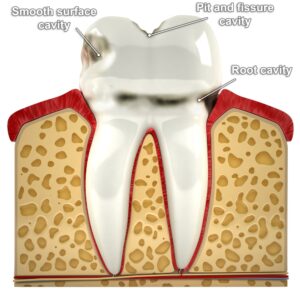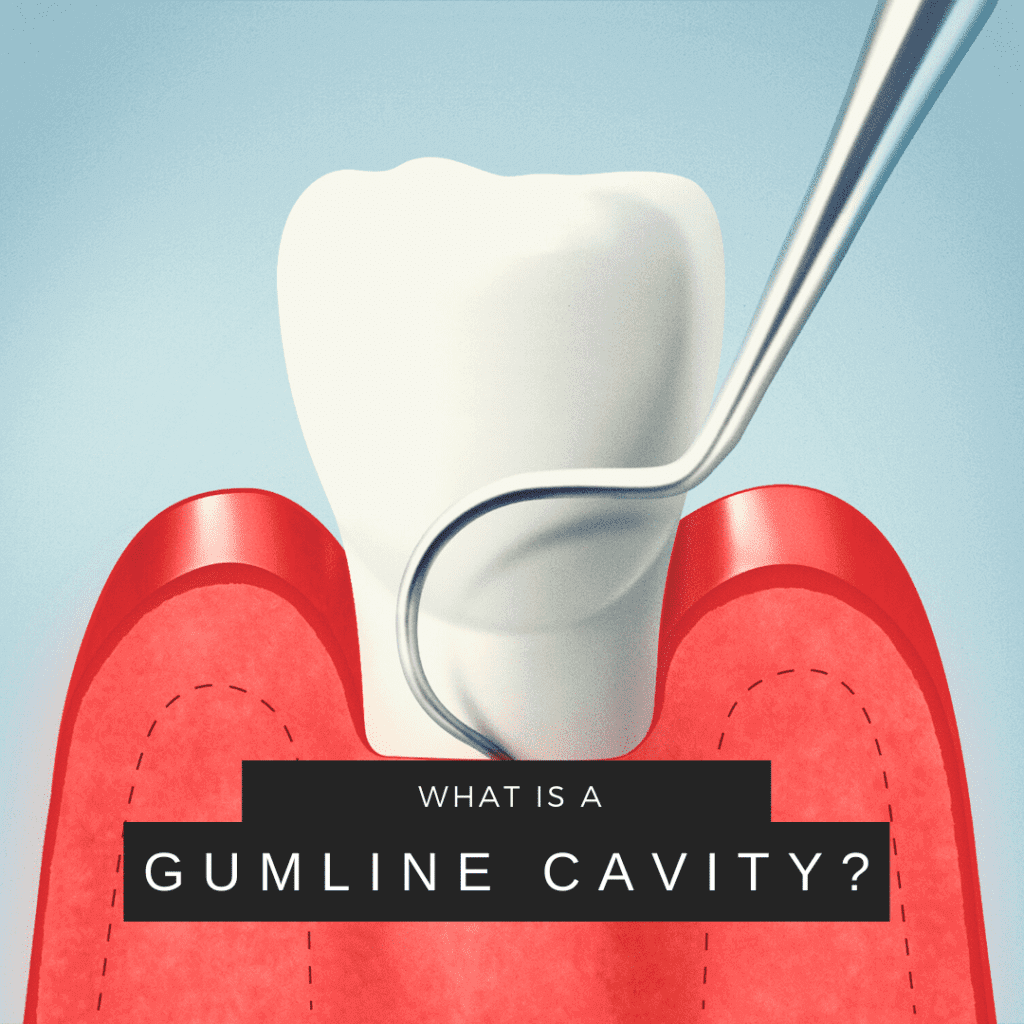Did you know that there are different types of dental cavities? Dental cavities are categorized based on where they are located. These include smooth cavity, biting surface cavities, and root cavities.
Smooth surface cavities are those that form on the smooth surfaces of your teeth, such as the fronts, backs, sides, and in between your teeth. Biting surface cavities also known as pit and fissure cavities form on the chewing surfaces of your teeth. Root cavities are cavities that occur below the gum line on the tooth roots.
But, what about gum line cavities?

Gum line cavities are not their own specific type of cavity. Instead, they are classified as being either a smooth surface cavity or a root cavity. Although gum line cavities form along the junction between the tooth and gums, they are categorized by whether they affect the smooth surface of the tooth’s crown or the root. In some cases, a gum line cavity may extend over both the crown and root.
Gum line cavities occur when bacteria in the mouth form plaque on the gum line and harden into tartar, which then causes decay to form along the gum line. In addition to causing tooth decay, plaque and tartar along the gum line can also cause gum inflammation. This can make the gums pull away from the teeth to get away from the bacteria causing the inflammation.
Unfortunately, this does two things. First, it allows for more plaque and tartar to form, and second, it exposes the tooth roots. Unlike the tooth’s crown which is covered in enamel, the roots are covered in cementum. Cementum does not offer the same protection as enamel, meaning that bacteria can erode through the tooth roots faster.
When it comes to treating cavities along the gum line, it will depend on the location and extent of the cavity. If your dentist suspects a cavity along the gum line, they will carefully examine the area. If there are signs of decay, they may take x-rays to determine its extent to make a treatment plan.
Cavities that are along the gum line, but are still on the crown of the tooth are the easiest to treat and they can usually be restored using a composite filling. Some minor root cavities may also be able to be restored in this way.
Extensive treatment may be required for those with extensive, deep-seated cavities that have extended beneath the gums. Because the cavity is hidden beneath the gums, your dentist may be unable to see and treat it effectively using a composite filling. Instead, they may need to perform minor gum surgery to access the cavity and a root canal may also be required depending on how deep the decay reaches. It is important to note, however, that there are many things that can affect your treatment plan and only your dentist can tell you what to expect.




